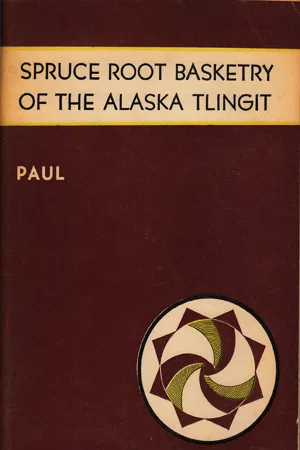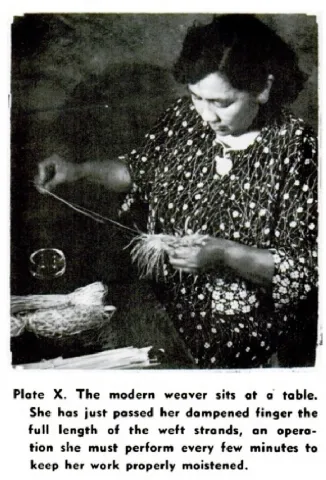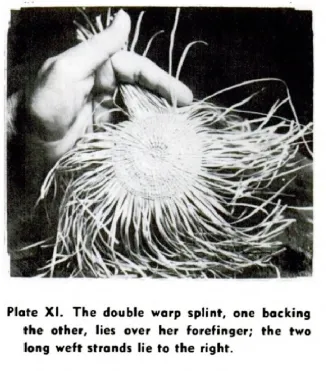
- 103 pages
- English
- ePUB (mobile friendly)
- Available on iOS & Android
Spruce Root Basketry of the Alaska Tlingit
About this book
The beautiful, artistic, and unique baskets of the Tlingit of southeastern Alaska. Numerous photos throughout.From earliest times the basket was made to use. In the huge community house of the winter village or the bark shelter of the summer fishing camp the furniture Consisted of baskets and wooden boxes. The old Tlingit did not understand the arts of pottery making or metal working. Baskets were used for cooking kettles, in which the women placed their meat or berries. They then dropped hot stones on the food with wooden tongs, added enough water to generate steam, covered the basket, and then set it aside until the food was cooked. Baskets, so closely woven as to be water tight, were their water jars and drinking cups. Baskets were one form of the family trunk, especially when traveling, because of their light weight. Baskets were used for gathering berries, roots and shellfish, for trying out seal and eulachon oil, for food dishes and for storage of food for winter. The typical work hat of the district, even some types of ceremonial hat, the headdresses of shaman or Indian doctors, shot pouches, work baskets, rattles and spoon bags were all woven from spruce root or cedar bark. This art was also used to make fish traps, net bags for eulachon fishing, huge mats for canoe sails and floor covering, the cradle swing for the baby and the winding sheet for the old shaman when his body was taken to the lonely burial house.
Frequently asked questions
- Essential is ideal for learners and professionals who enjoy exploring a wide range of subjects. Access the Essential Library with 800,000+ trusted titles and best-sellers across business, personal growth, and the humanities. Includes unlimited reading time and Standard Read Aloud voice.
- Complete: Perfect for advanced learners and researchers needing full, unrestricted access. Unlock 1.4M+ books across hundreds of subjects, including academic and specialized titles. The Complete Plan also includes advanced features like Premium Read Aloud and Research Assistant.
Please note we cannot support devices running on iOS 13 and Android 7 or earlier. Learn more about using the app.
Information
THE TECHNIQUES OF WEAVING

THE FIVE TYPES


WEAVE 1
WEAVE 2
Table of contents
- Title page
- TABLE OF CONTENTS
- MAP
- THE TLINGIT COUNTRY
- ILLUSTRATIONS
- INTRODUCTION
- GEOGRAPHICAL LOCATION
- USES OF BASKETS
- BASKETRY MATERIALS
- THE TECHNIQUES OF WEAVING
- FORMS OF BASKETS
- ROOT HATS
- ORNAMENTATION
- PATTERN NAMES
- THE MOTHER-BASKET OF THE CHILKAT
- BIBLIOGRAPHY